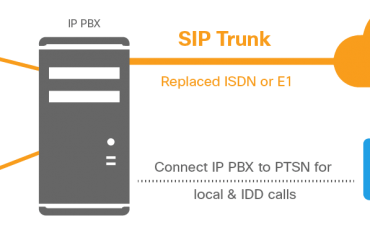Sunday, 26 December 2021
/
Published in Uncategorized
TMGEC-00-05-SIP – Overview

We will first move thought a immediate overviewof the SIP ecosystem and terminologies. If “youre not” familiar with the concept oftelephony signaling and with the basic concepts of Session Initiation Protocol( SIP ), we greatlyrecommend that you take the time to look at the four base world-class from sipsense.com. All liberty, this first layout illustratesthe major components in the SIP ecosystem: the user agents, agent, registrar, LocationService, Registry and Feature servers.The blue cables represent the signaling whilethe cherry-red orders represent the media carried away RTP( Real Time Protocol ). User Agents( IP or soft phones) registry acontact for a specified Address of Record( AOR) to the domain Registrar. The Registrar propagandizes this information to thedomain SIP Registry. When an incoming SIP call contacts the domainproxy, it delivers the place service with the AOR found in the incoming announce, retrievethe associated contact and itinerary the call towards that registered maneuver IP. Both the Registrar and Location services areoften co-located with the proxy but can also be provided by other ingredients such as anIP PBX. The main function of the Proxy is to routecalls toward the appropriate service or to another orbit agent if the User Agent toreach is not served by this proxy.The feature servers supply telephony servicessuch as voicemail, call forwarding, find me or “re coming with me”, meet, music on hold, callparking, and many more. An Enterprise IP Public Branch Exchange( IPPBX) integrates many services in a single instance: Registrar, Location, routing andmany SIP telephony business. The IP PBX is usually connected to a SessionBorder Controller( SBC) providing protection against DOS/ DDOS onslaught, see frequency limitingand internal network topology hiding. The SBC connects to an ISP, CLEC, ILEC orcarriers class 4 soft switching routing inbound and outbound calls to other carrier throughthe Public Switched Telephony Network( PSTN) or VoiP stems. Enterprise VoIP is delivered by CLEC, ILECor ISP by connecting Enterprise IP PBX to a class 4 softswitch. Here, class 4 refer to the courses of switcheson a PSTN North American network and refer to a tandem switch unite calls to othernational country switchings or international switches. TelcoBridges Tmedia VoIP Gateway can be usedas a class 4 tandem permutation in standalone or in conjunction with a Softswitch. SIP trunks are now widely used to interconnectswitches or carriers as a replacing to the costly PSTN infrastructure.Residential and Enterprise VoIP can be providedby an hosted IP PBX in the CLEC, ILEC or ISP network. This IP PBX is also called a Class 5 softswitchas a reference to the legacy class 5 PSTN telephony substitutions. The CLEC/ ILEC/ ISP IP PBX or Class 5 switchconnects to carriers class 4 tandem permutations with SIP/ VoIP trunks or gift TDM trunksusing ISUP or ISDN signaling. In the next trends, we will explore morein-depth the legacy TDM and SS7 signaling world. Now makes take one step back to understandthe differences between a SIP proxy and a Back to Back User agent. To summarize the distinctions between a Proxyand a B2BUA, the authorities concerned will firstly look at the role of a agent and the concept of transactionand dialog/ discussion. For this, we will refer to the seven SIP basesignaling senses: INVITE request, 100 Trying response, 180 Ringing response, INVITE 200 OK response, ACK request, BYE request and BYE 200 OK response. SIP is a transactional protocol where interactionsbetween components in the network take place in a series of independent message exchanges.A SIP transaction consists of a single requestand any responses to that request. Transactions have a client side and a serverside. The buyer back is known as the client transactionand the server line-up as the server deal. The buyer event refers the request, and the server busines transmits the response. The first event, in light-green, is initiatedby ua.a user agent, who transmits the INVITE client transaction to a proxy.The proxy acknowledge the reception of theINVITE request to ua.a by casting back a 100 trying response. The agent superhighway the INVITE request to ua.band create a 2nd client event( in violet ). User agent ua.b acknowledge the receptionof the INVITE request to the agent by send back a 100 trying response. User agent ua.b communicates the server transactionresponses 180 Ringing and 200 OK back to the proxy.The transaction is terminated on receptionof a final 200 OK response. The agent casts the 200 OK server transactionresponses back to ua.a and terminate the transaction. The buyer user worker recognized by receptionof the final 200 OK response by sending a ACK request. Note that the proxy did not positioned itself inthe footpath for any further requests on this dialog/ hearing and therefore the ACK is sentdirectly to ua.b user agent. Once the ua.b user agent have received theACK, the dialog session is established and the Voice session starts. The event ID is carried in SIP messagesthrough the via SIP header branch parameter. The call constants in the To and From SIPheaders, together with the call-id SIP header carry the unique dialog and time identifierof a announcement session.The completion of a bawl dialog discussion isdone by exercising SIP BYE message. Now, the ua.a whish to terminate the conversationand initiate BYE request purchaser deal( in pink) instantly to the ua.b user agent. ua.b answers with a server busines 200 OK response, which terminate both the BYE transaction and the dialog/ conference. Now, that you understand more about transactionsand dialog session handling at a agent, tells look at a special SIP component called a backto back user agent. Like the proxy, on reception of an INVITErequest from ua.a, b2bua routes the call toward ua.b and create a brand-new client deal. Nonetheless, contrary to the proxy, the b2buaalso organizes a new dialog/ discussion. The b2bua acts as a customer operator server withua.a and as a used worker consumer with ua.b. 2 voice seminars are organized, in orange andred, with the media been terminated on both surface of the b2bua. Also , had pointed out that the b2bua modify some of theoriginal sender ua.a SIP header, such as for example, the SIP contact header, where thehost is changed to s.b2bua. com and the port to 5062. This characteristic is also announced networktopology hiding, were some information of user workers behind the b2bua, such asthe host ip and port in SIP header URI are modified by the b2bua. We can summarize the differences between aproxy and a b2bua by the fact that a the agent is never in the path of the established dialog/ sessionand therefore does not have to process media.A b2bua has the capability to process themedia between 2 user agents and can perform transcoding of the media, depending if theb2bua has transcoding abilities. We “il be seeing” last-minute in this course how thiscould be achieved. So, TelcoBridges Tmedia is a SIP b2bua havingtranscoding and network topology hiding abilities. For a b2bua, the terminu of a ask dialogsession is similar and done by utilize SIP BYE message. Here, ua.a whish to terminate the conversationand initiate a BYE request patient busines( in pink) to b2bua. b2bua initiate a BYE request buyer transactionto ua.b ua.b answers with a server event 200 OK response, which terminate both the BYE transaction( in light purple) and the dialog/ period( in blood-red) with ua.b user agent. b2bua then greets with a server transaction2 00 OK response to ua.a, which terminate both the BYE transaction( in pink) and the dialog/ hearing( in orange) with ua.a user worker ..



